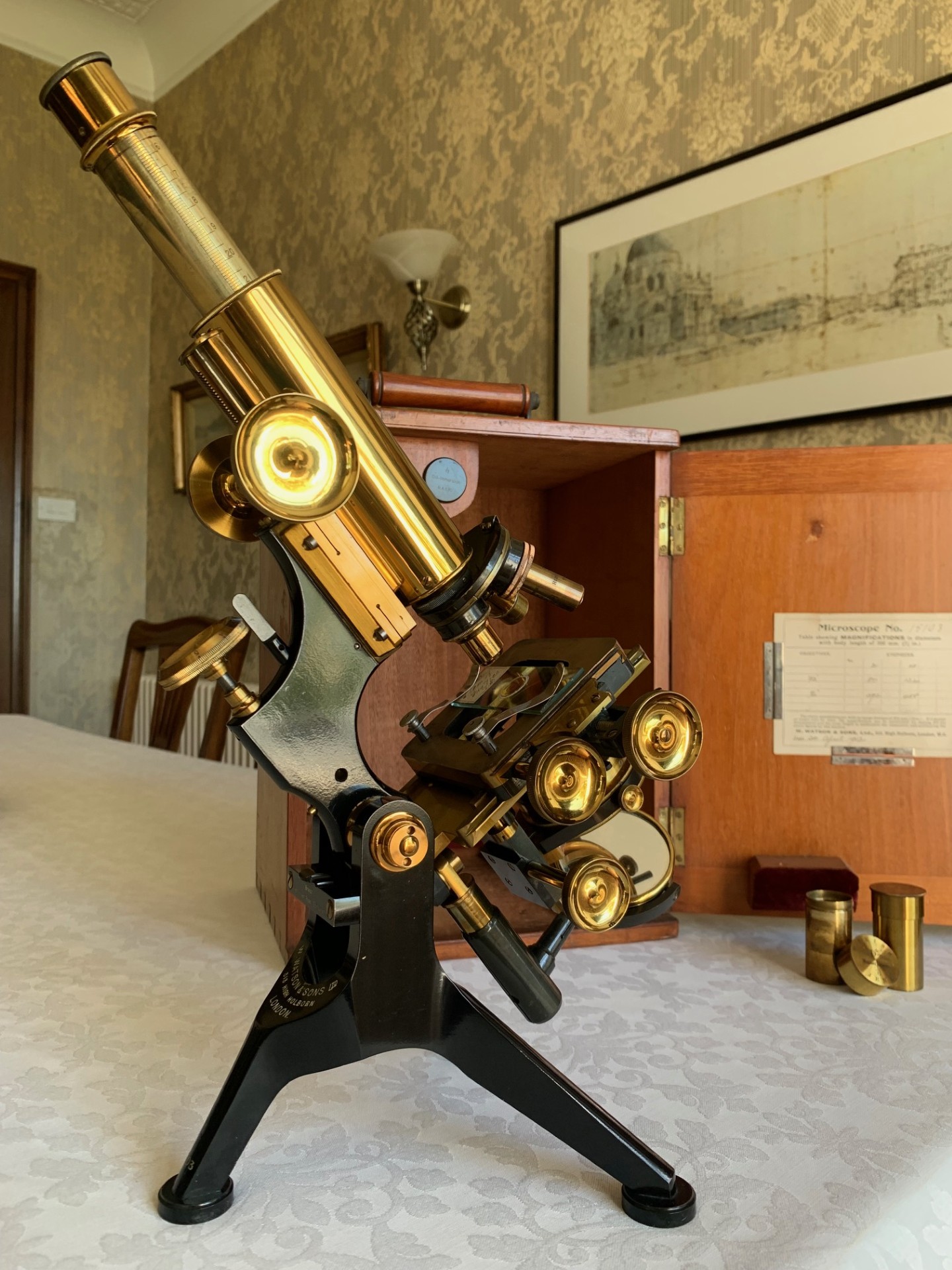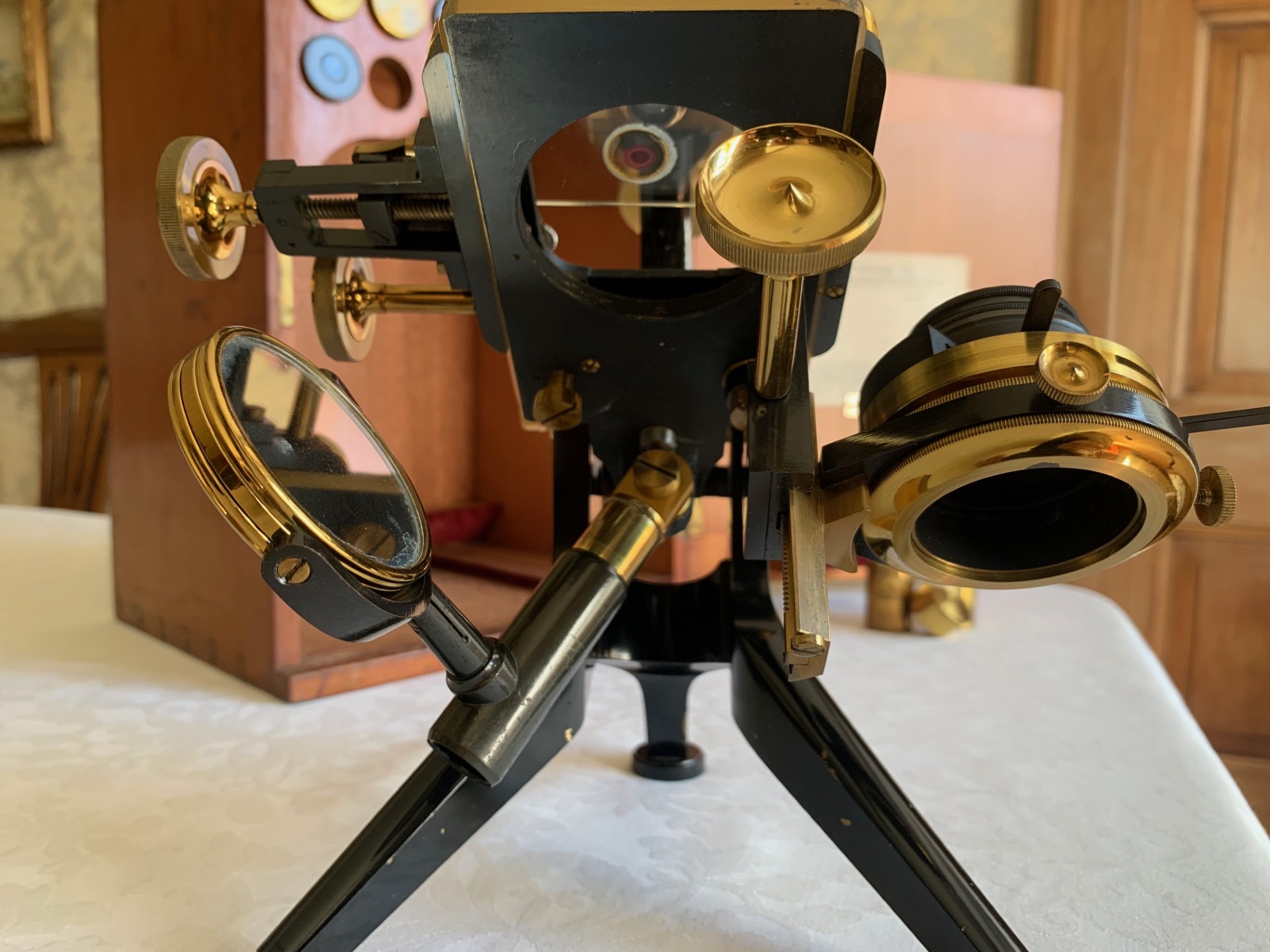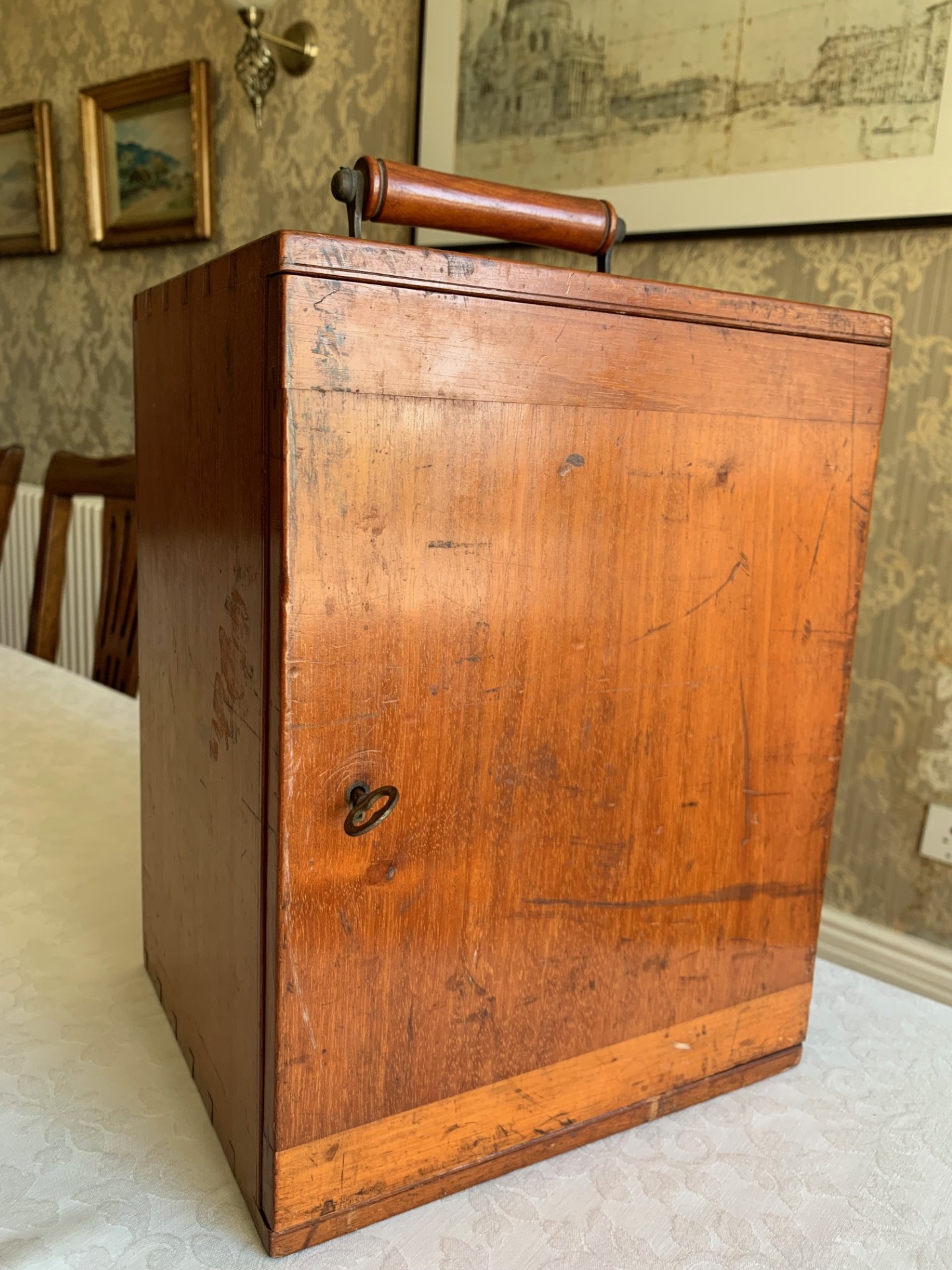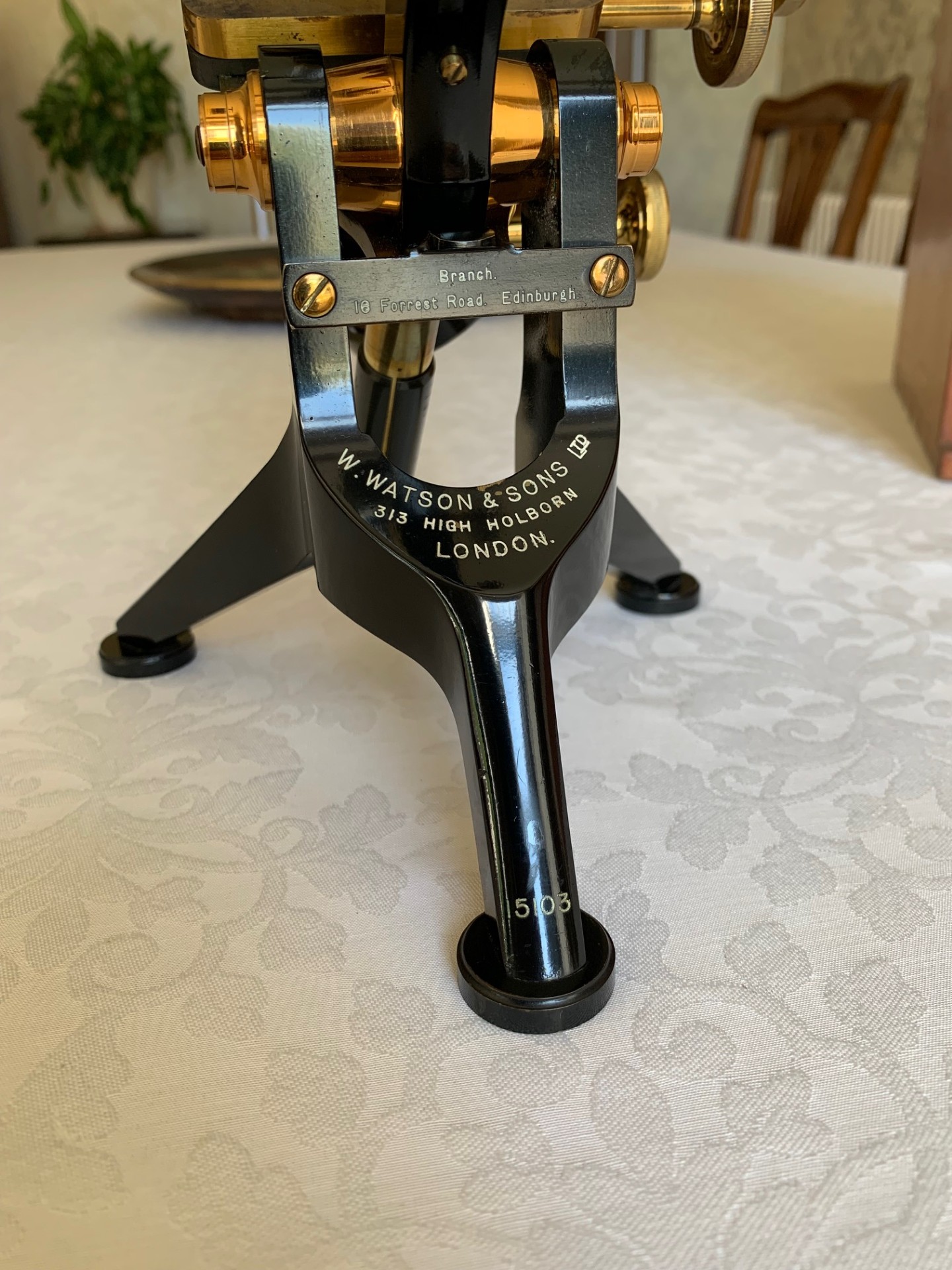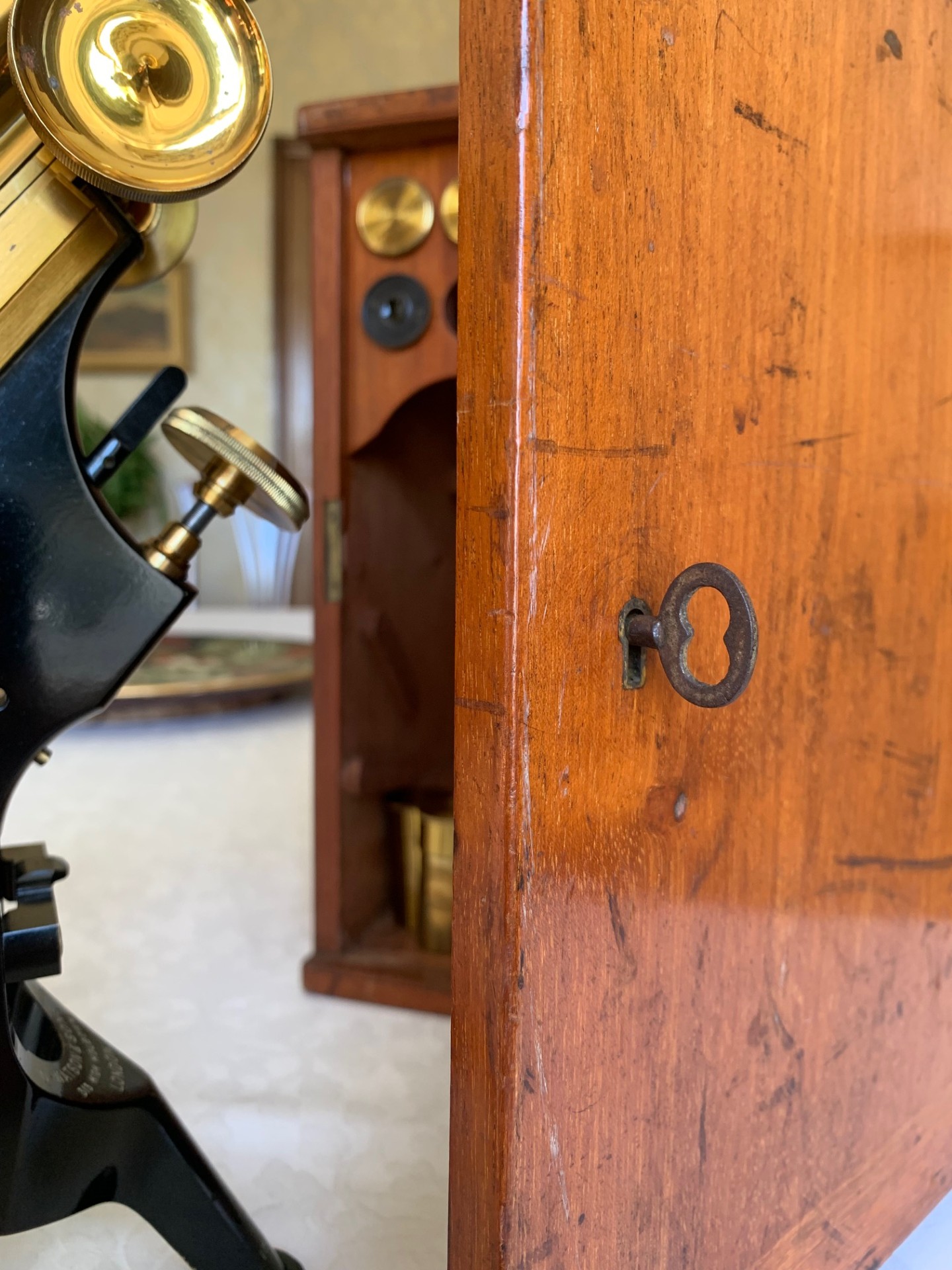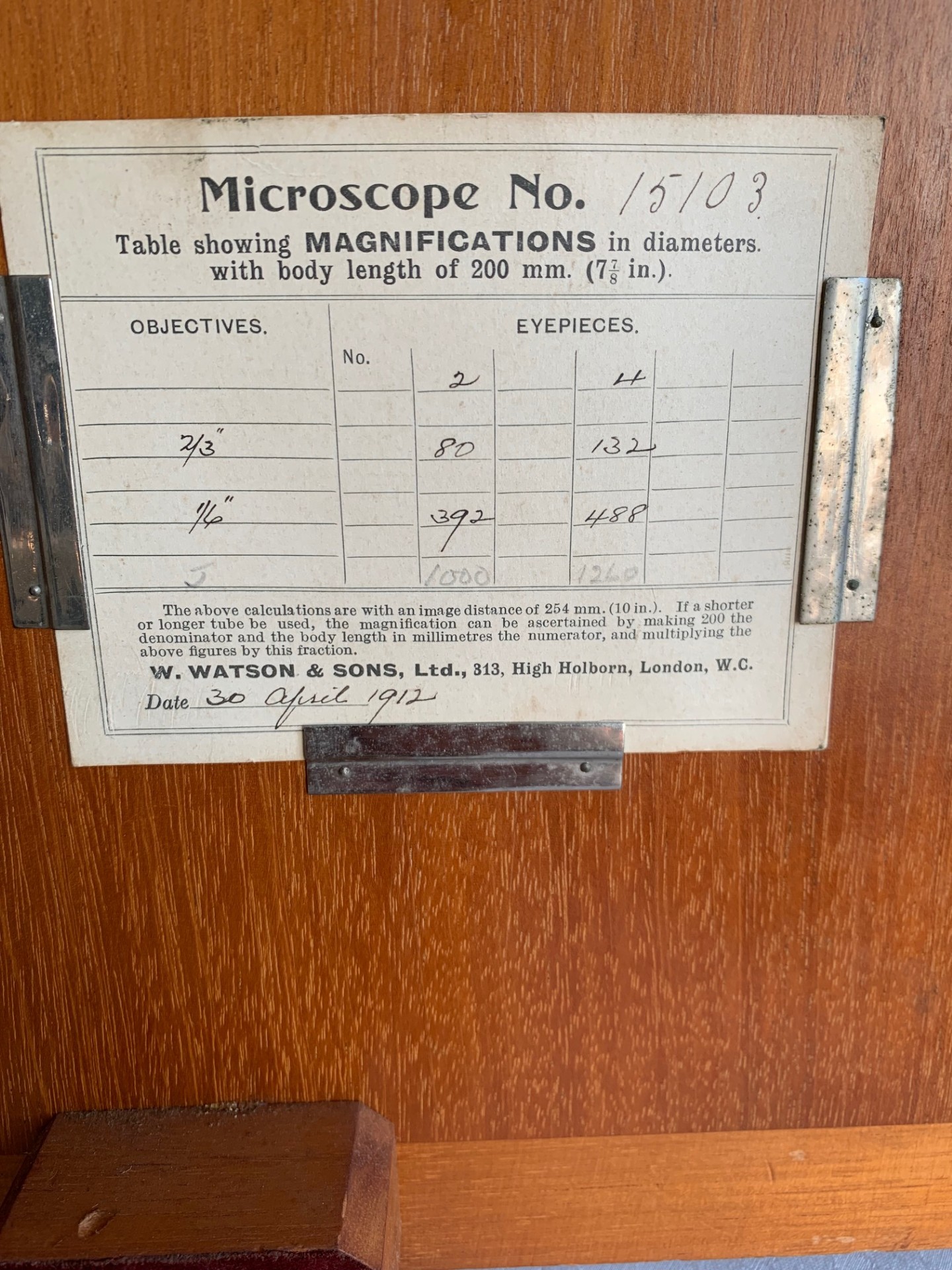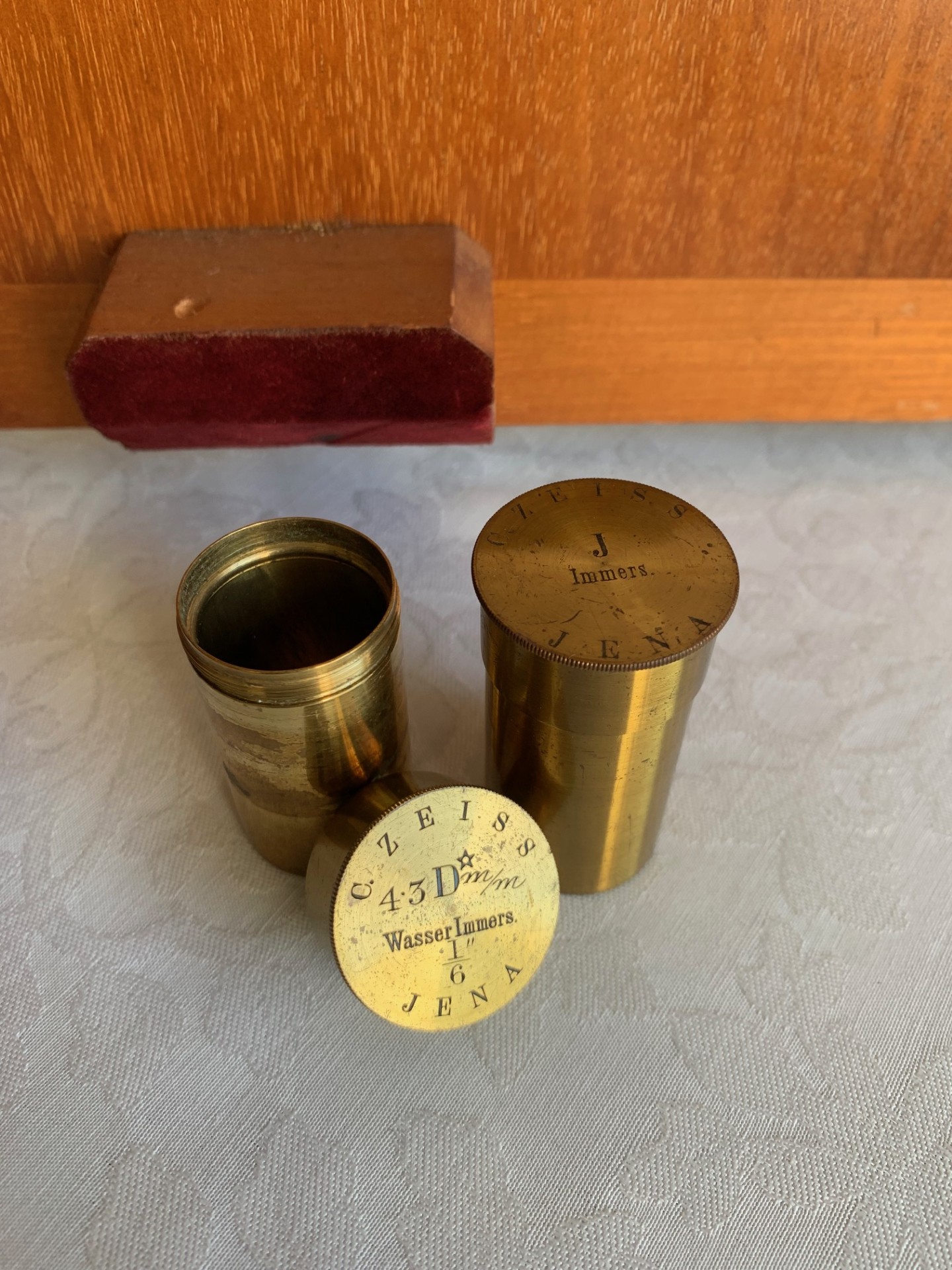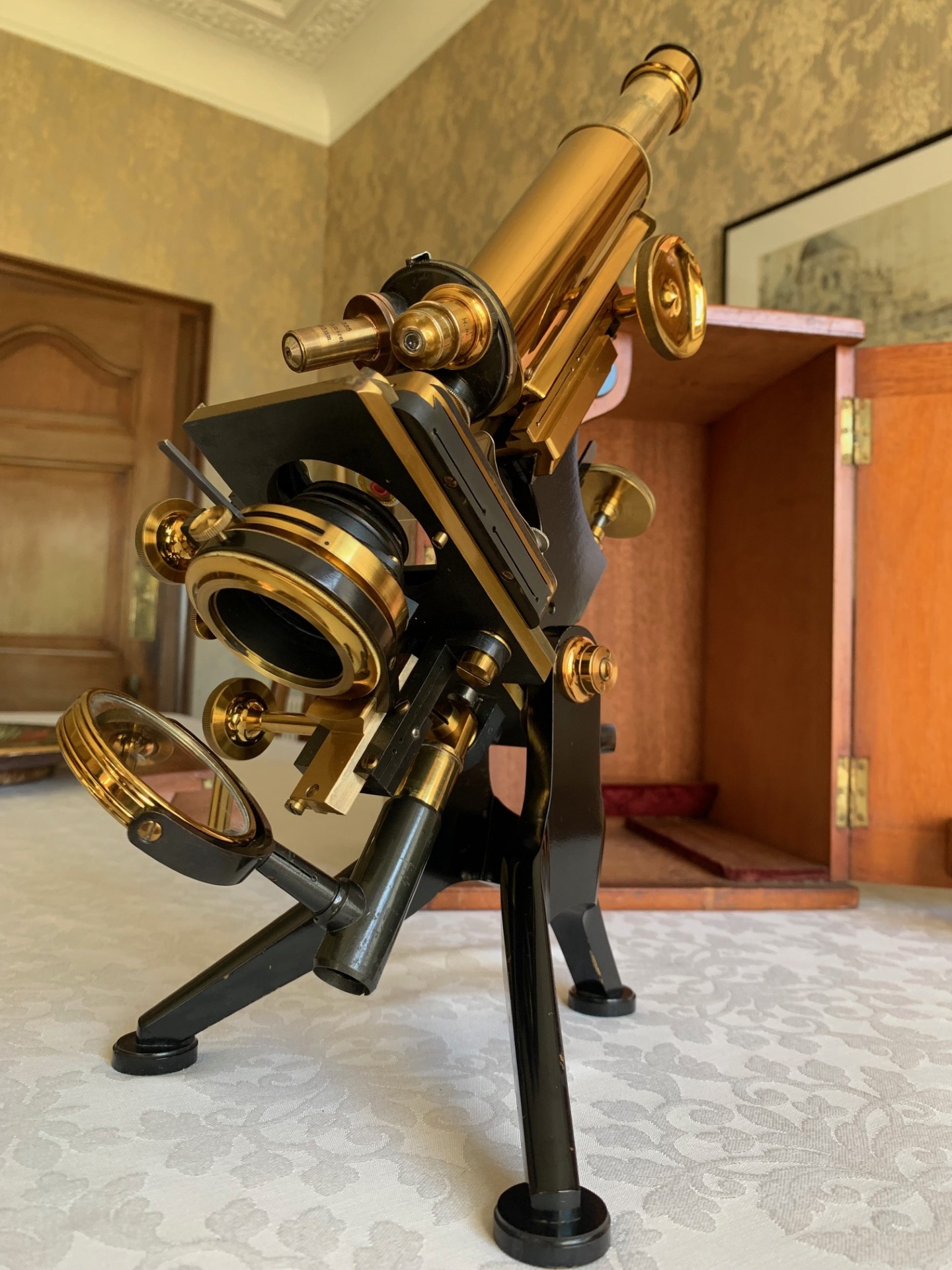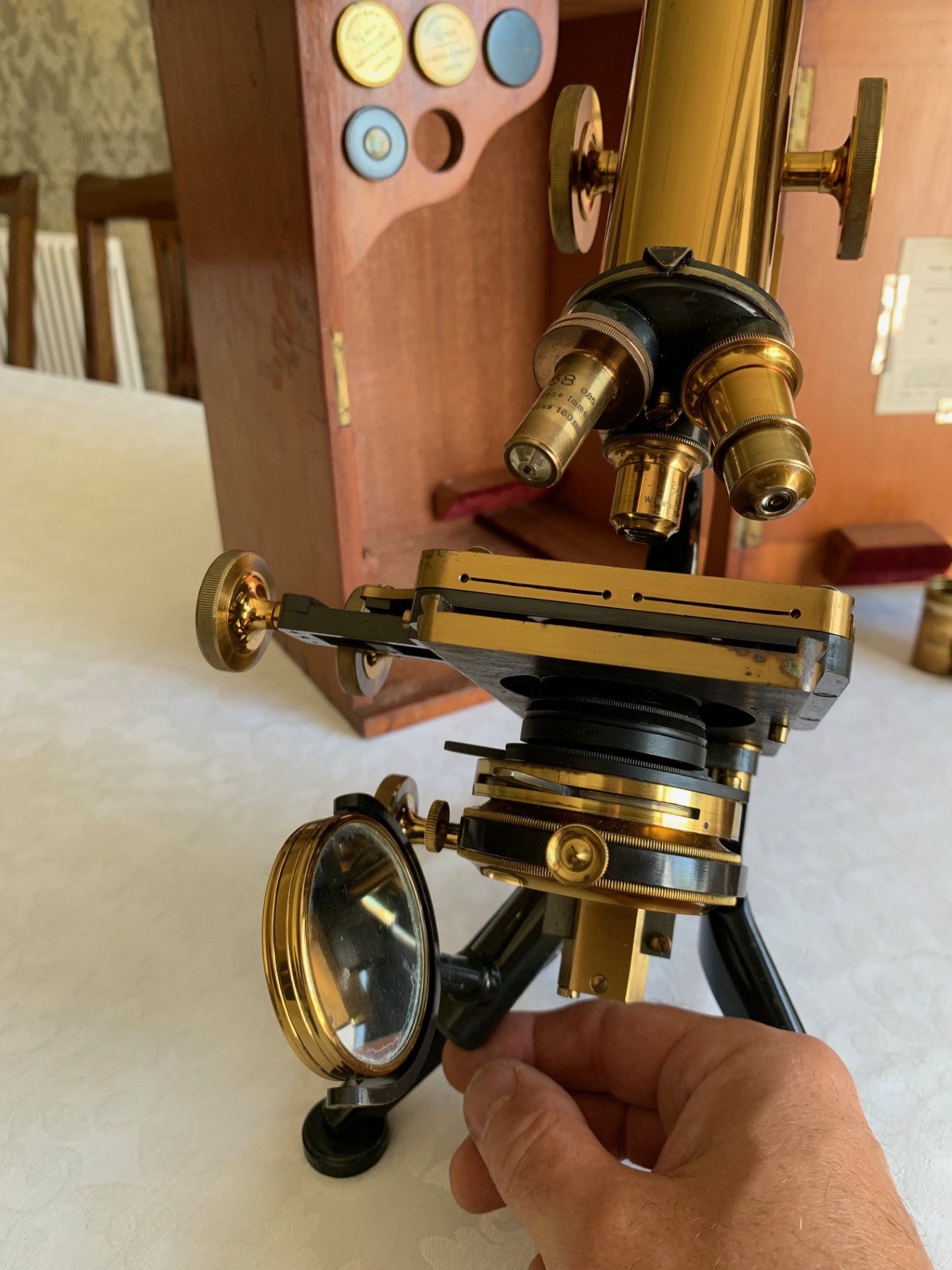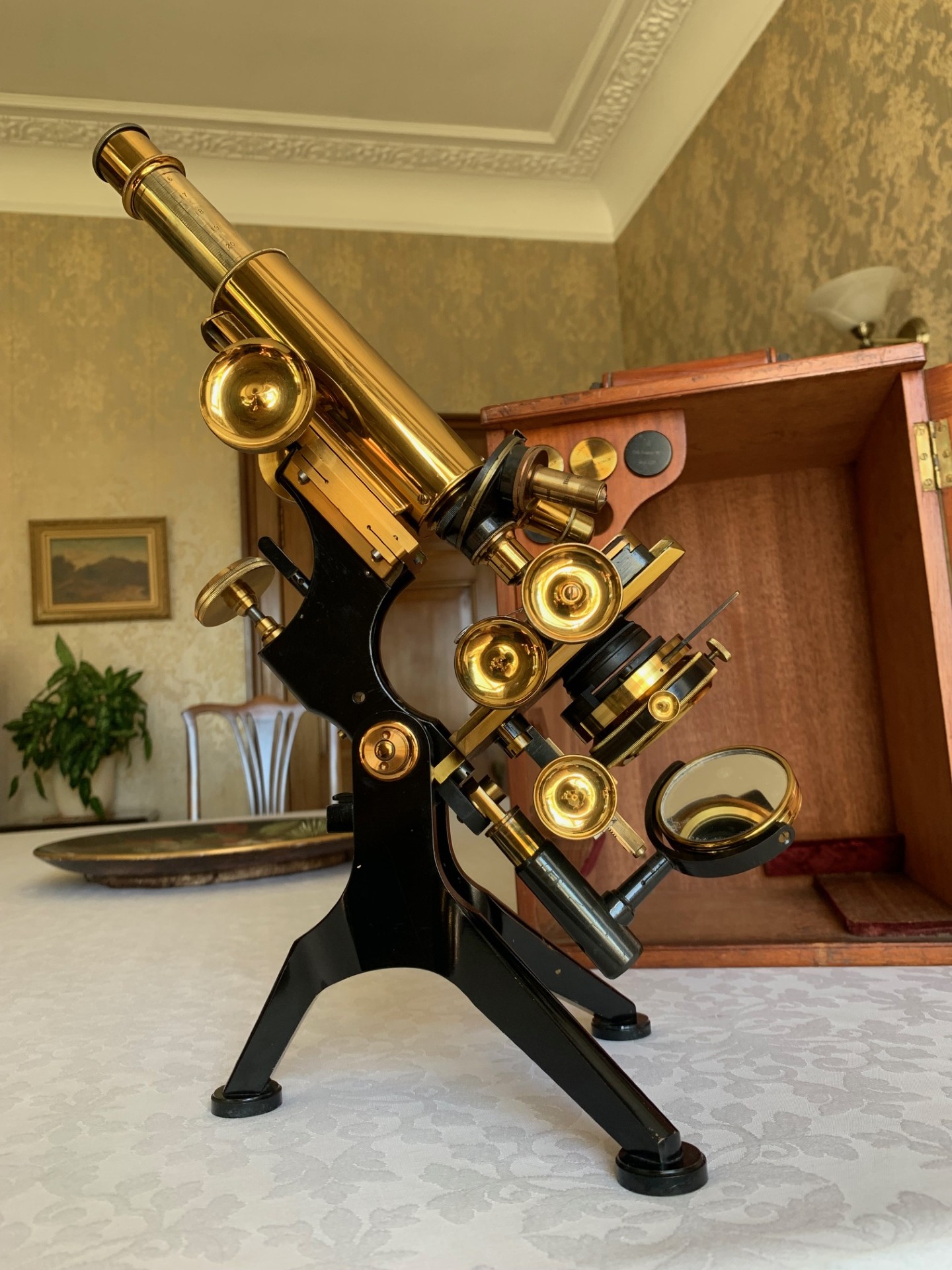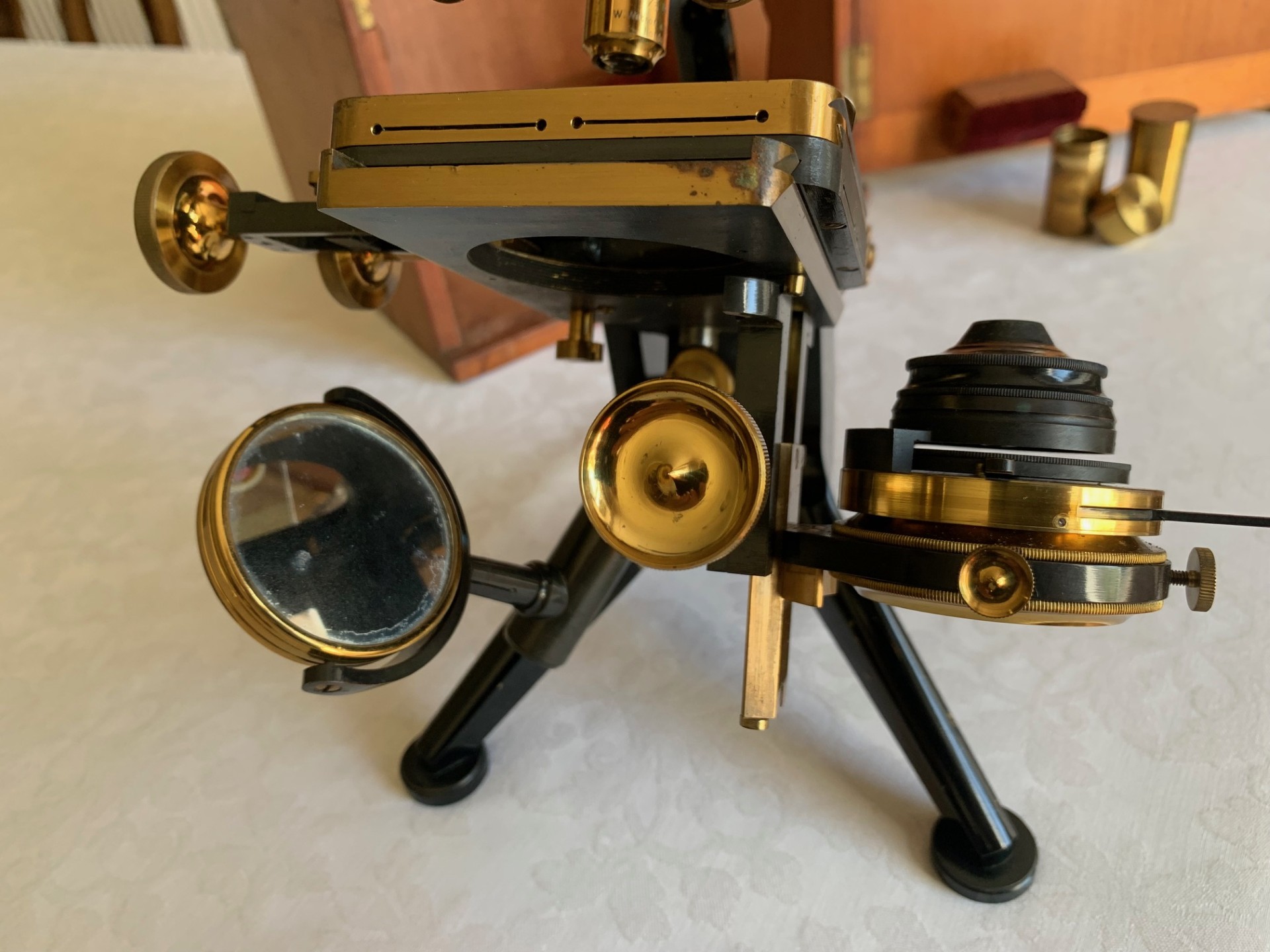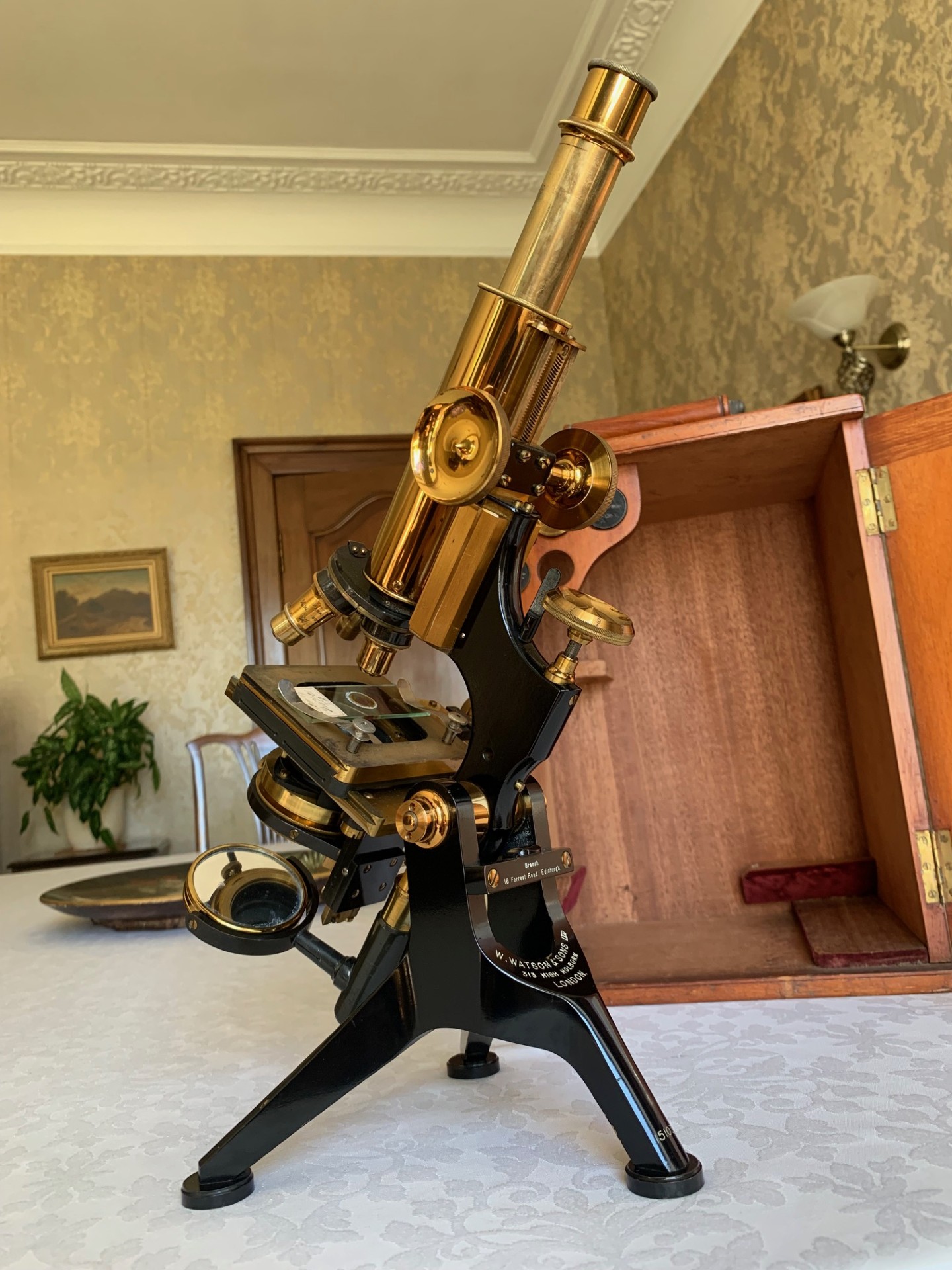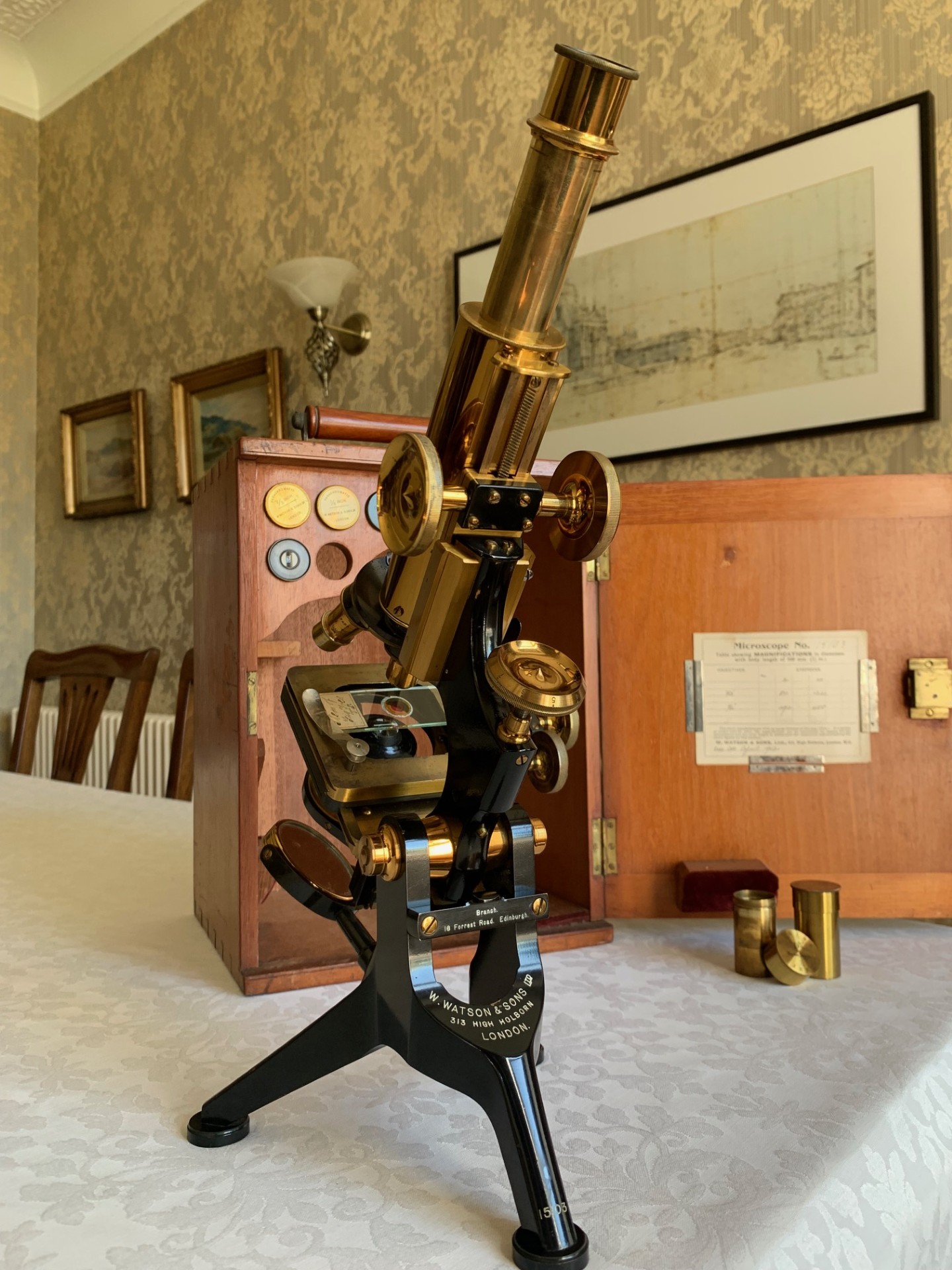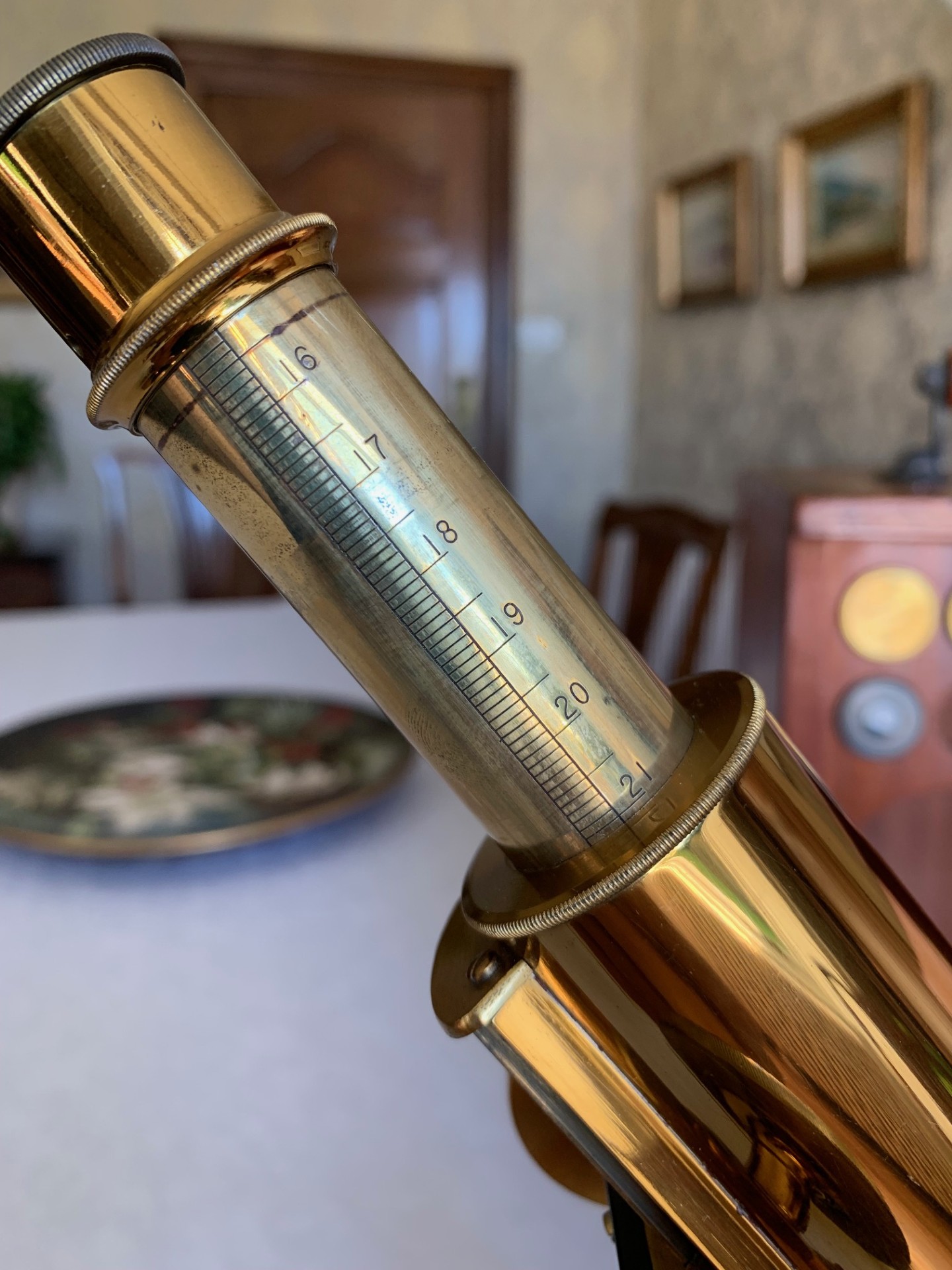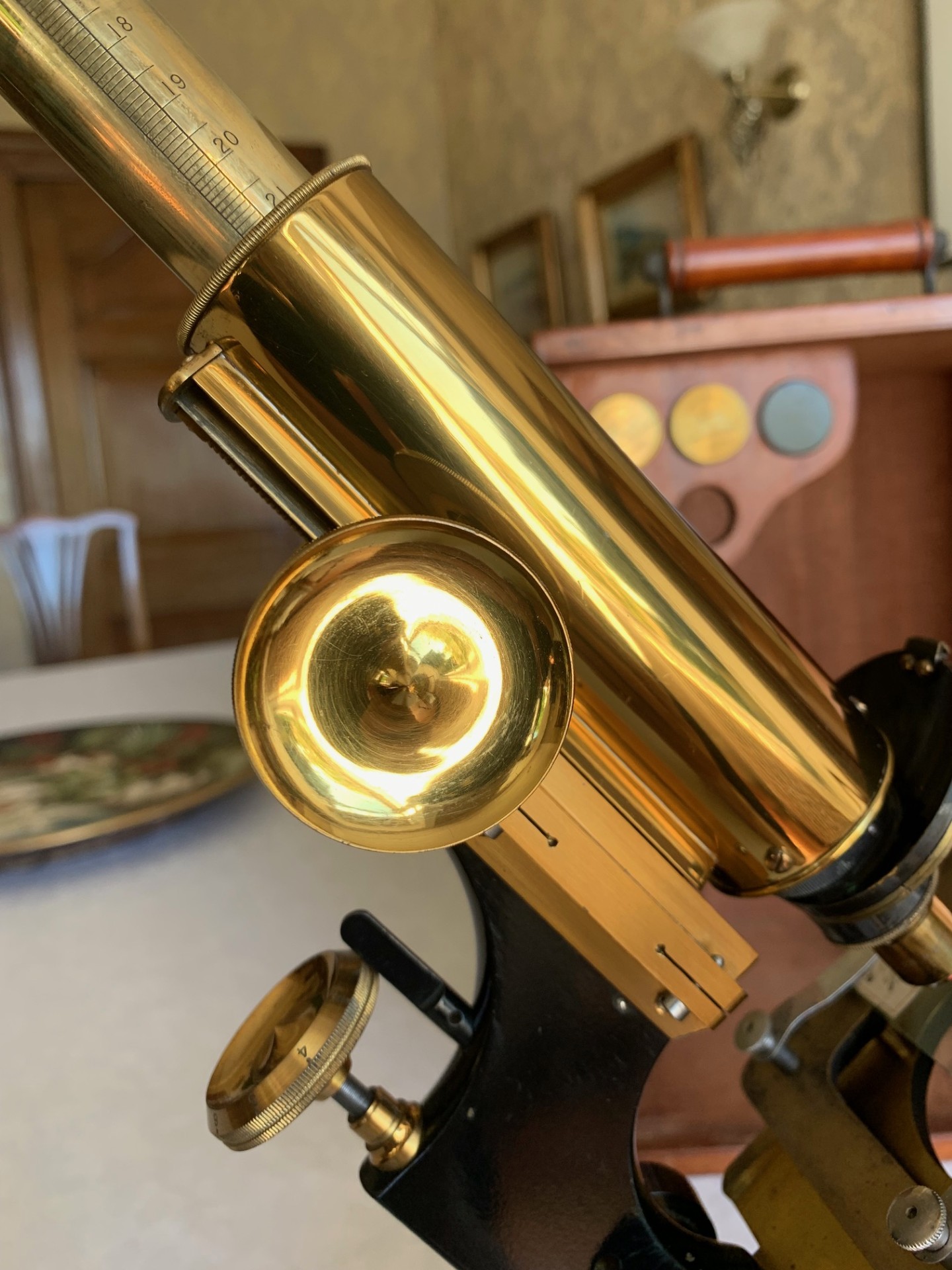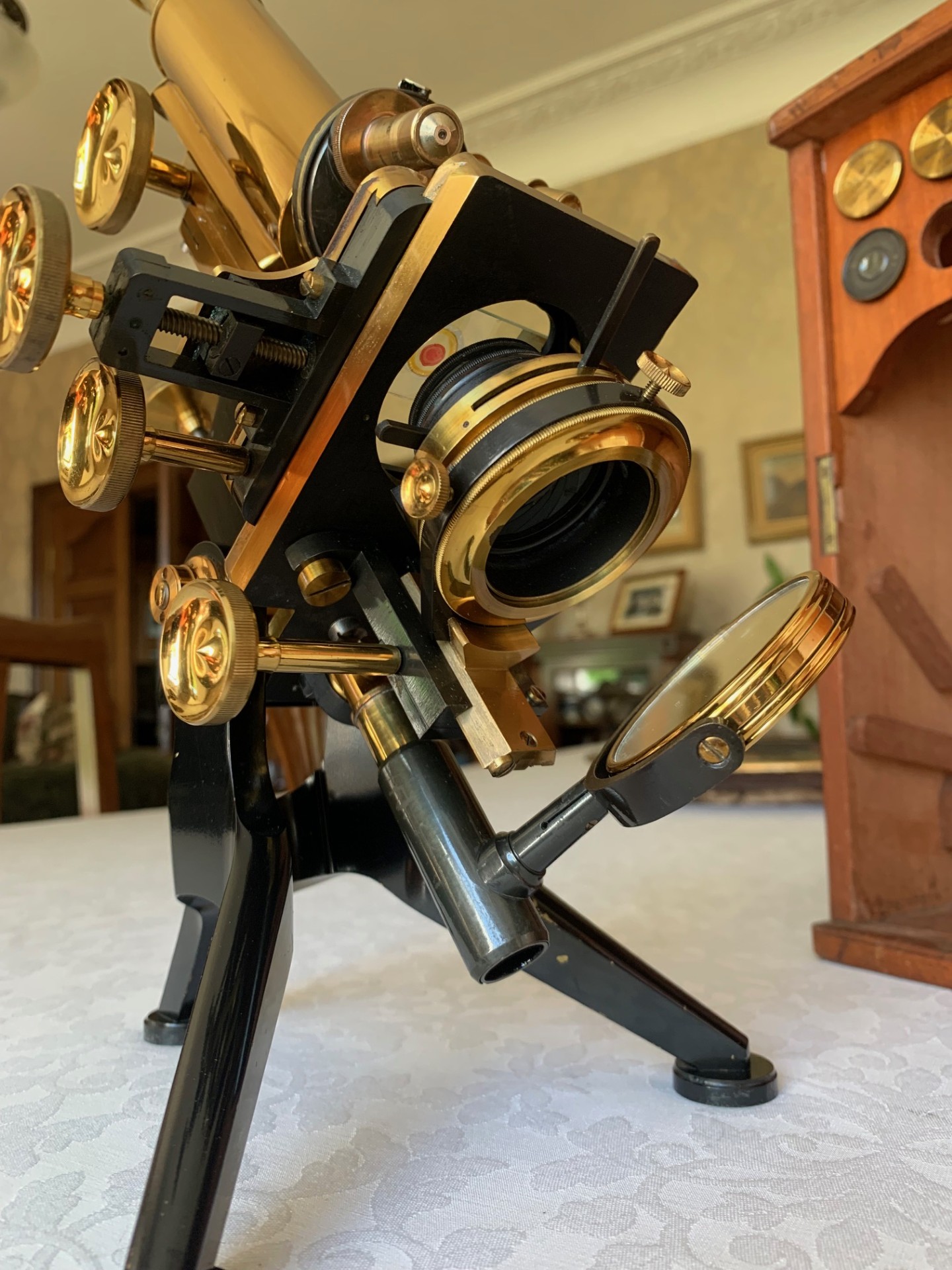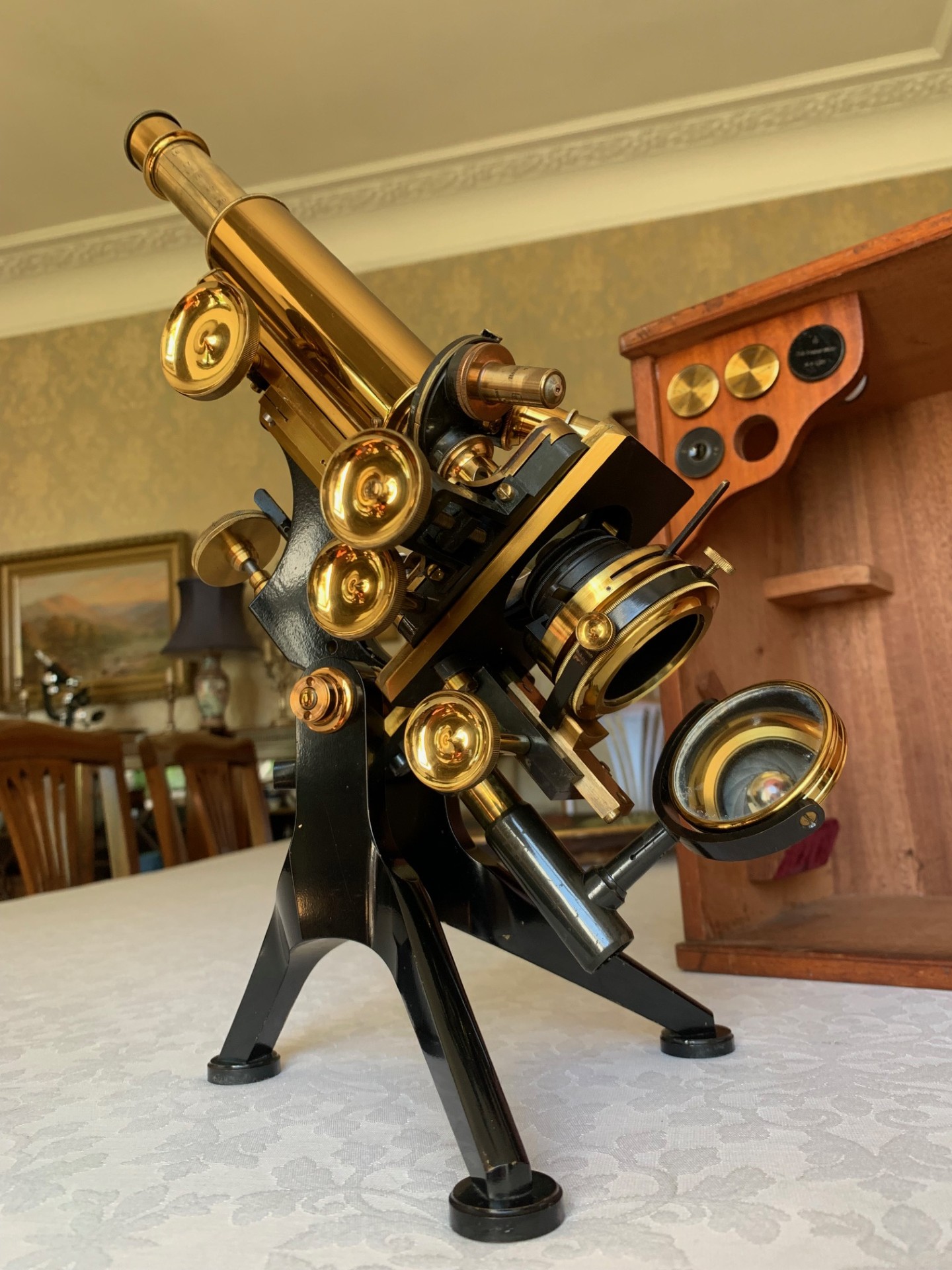SOLD – Antique W. Watson & Sons Ltd – Edinburgh-H Brass Microscope – circa 1912, Cased
Sold
Amazingly good original condition and completely unmolested example of Watson's popular Edinburgh-H model and a rare find in this condition. The instrument and case are matching numbers, date to 1912 and this example was originally retailed via a Watson branch in Edinburgh. Perfect example in stunning condition, ideal grail collectable for a Watson enthusiast.
Circa
1912
Maker
W. Watson & Sons Ltd
Country of manufacture
UK and Ireland
Description
Offered for sale – Watson Edinburgh-H c1912 serial no. 15103 – antique stand “H” that’s a stunningly good find.
This listing is for a beautifully presented and also quite early example of Watson’s Edinburgh Student’s Stand-H model microscope in brass – it dates to 1912 based on its serial number 15103, with confirmation of the exact date of sale as 30th April 1912 on the guarantee/magnification card that’s on the inside of the case door. It’s marked W. Watson & Sons Ltd and post-dates the firm’s move to limited company status which occurred in 1908 and it’s also marked as sold via Watson’s retail outlet in Edinburgh. This is a particularly good example with very few signs of wear (nothing that I can find) and excellent lacquered brass-work that’s almost spotless, which is amazing considering the instrument’s age – I hope that the listing photos do the instrument justice and showcase its pristine, almost museum quality condition.
The Edinburgh pattern model of microscope was produced by Watson between 1887 and around 1945; its long production run giving us a firm clue regarding just how good this model of microscope was in its heyday and over that long production cycle Watson regularly updated and improved the model, so what you see here is a fairly early example with some of the original Edinburgh features such as: the stage attached via brass bolts to the upper limb and mirror on a swinging support arm. The Edinburgh stand was originally developed by Watson in collaboration with a professor and lecturer in bacteriology at the University of Edinburgh, hence the Edinburgh designation. With its signature rear cross-member giving that classic “H” look and nice lacquered brass-work, the Edinburgh H is a fine example of British optical engineering with a design and style essentially dating back to the Victorian era.
Turning to the technical details, the construction is a brass tripod in black paint finish, with bun feet that are attached by small brass screws. From the tripod rise twin uprights to a pivot with tension adjustment available if required. The upper limb is also in black-painted brass, with stage bolted to the underside of the limb and the sub-stage fittings attach to the underside of the stage. The coarse focus is via rack and pinion with good smooth action that holds in position on adjustment. Fine focus is operated via a separate brass thumb-wheel located at the rear of the upper limb which operates an internal lever system acting against sprung resistance. The focusing technique being to achieve near focus with the coarse thumb-wheels, then fine-tune with the single rear thumb-wheel, which only has a fairly small range of movement via its vernier screw mechanism.
With the optics, this Watson microscope comes fitted with a period graduated brass eyepiece draw-tube inside a brass main optical tube and there’s two vintage Watson eyepieces that with adequate illumination produce very good images:
– 6x magnification
– 10x magnification
It’s also got six period objectives in total and a triple turret which rotates with a positive feel as the objectives slot into their viewing positions. The objectives are mainly by Watson and Zeiss as follows:
– 2/3rds inch para in brass by Watson – 10x magnification (some internal cloudiness)
– 2/3rds inch in chrome finish by J Swift & Sons Ltd – 10x magnification
– 1/6th inch para in brass by Watson – 40x magnification
– Carl Zeiss D*4.3mm – approx 40x magnification – water immersion required
– 1/12th inch unbranded in chrome finish – 100x magnification – oil immersion required
– very rare Carl Zeiss J – 1mm – approx 125x magnification – oil immersion required
(all objectives have their correct brass canisters)
(there’s also an unbranded low-power brass objective of about 4x magnification)
Overall therefore, the range of magnification available with this Watson ranges from about 60x with the lowest power lens combination, up to around 1,250x with the highest power combination and with the benefit of very good illumination and an immersion technique when using the Zeiss J objective.
The fully mechanical stage is an original Watson design in brass with twin thumb-wheel adjusters on the right hand side of the stage that have just the right positive feel and give excellent x/y sample movement. It’s fitted with specimen clips that are fine for holding slides steady during inclined viewing and when the axes are being moved around. The freely running x/y controls also offering fine control of specimen positioning, which is a real advantage for higher magnification work.
Turning to the sub-stage, we have a top-mount Watson Abbe-type condenser in a ring-carrier with centering controls comprising twin brass thumb-screws, which sits in a height adjustable rack and pinion mount with single-sided brass thumb-wheel to adjust the height along with a swing-out feature allowing easy swapping or maintenance of the condenser hardware. I’ve shown the swing-out feature in the listing photos. The condenser assembly also has a working iris to control lighting levels and there’s a 35mm swing-out carrier fitted for adding coloured, opaque of dark-field filters. Lighting is via a plano-concave mirror on a height and swing-adjustable brass support arm with slider and gimbal, with period silvering that’s showing age-related foxing to the margins on both sides, but with reflectivity that’s fine.
The instrument’s controls and friction surfaces have been very lightly lubricated with non-hardening grease and operate smoothly with a nice feel and there’s very little in the way of age-related signs of wear to any of the moving parts. This instrument presents exceptionally well with lovely gleaming brass-work showing remarkably few signs of tarnishing and spotting for its age and has obviously been incredibly well looked after throughout its life. Overall, it’s in excellent shape for an instrument that’s over 110 years old. This example is essentially a just about perfect collectible antique Watson Edinburgh Stand-H model in the right condition for a collector or connoisseur and it’ll make a great usable and display item that’s offered at an attractive price point for an Edinburgh-H model of this age in such fine condition. It also presents really well while being used as a desk-top instrument and will also display rather nicely in a library of home office setting.
There’s an original Watson storage case with this example, with wooden carry-handle, lock and key present which is always nice to have and there’s the 1912 guarantee card on the inside of the case door which is actually quite hard to find for Watson instruments as old as this. Overall the case has just the right aged look with patina and some lovely exterior sheen, so complements the antique microscope perfectly.
Owing to the weight and delicacy of this antique Edinburgh-H microscope and its case, it will be partially dismantled, very well wrapped for shipping and dispatched by insured courier upon receipt of cleared funds.
Thanks for looking.
Ask the Dealer
Dealer information
 Arcboutant Scientific
Arcboutant Scientific
Arcboutant Scientific based in Glasgow Scotland, with an interest in scientific collectables dating back to 1988. Now making available carefully curated fine examples, principally of antique microscopes and associated scientific equipment by quality English and Continental makers, to collectors world-wide.



